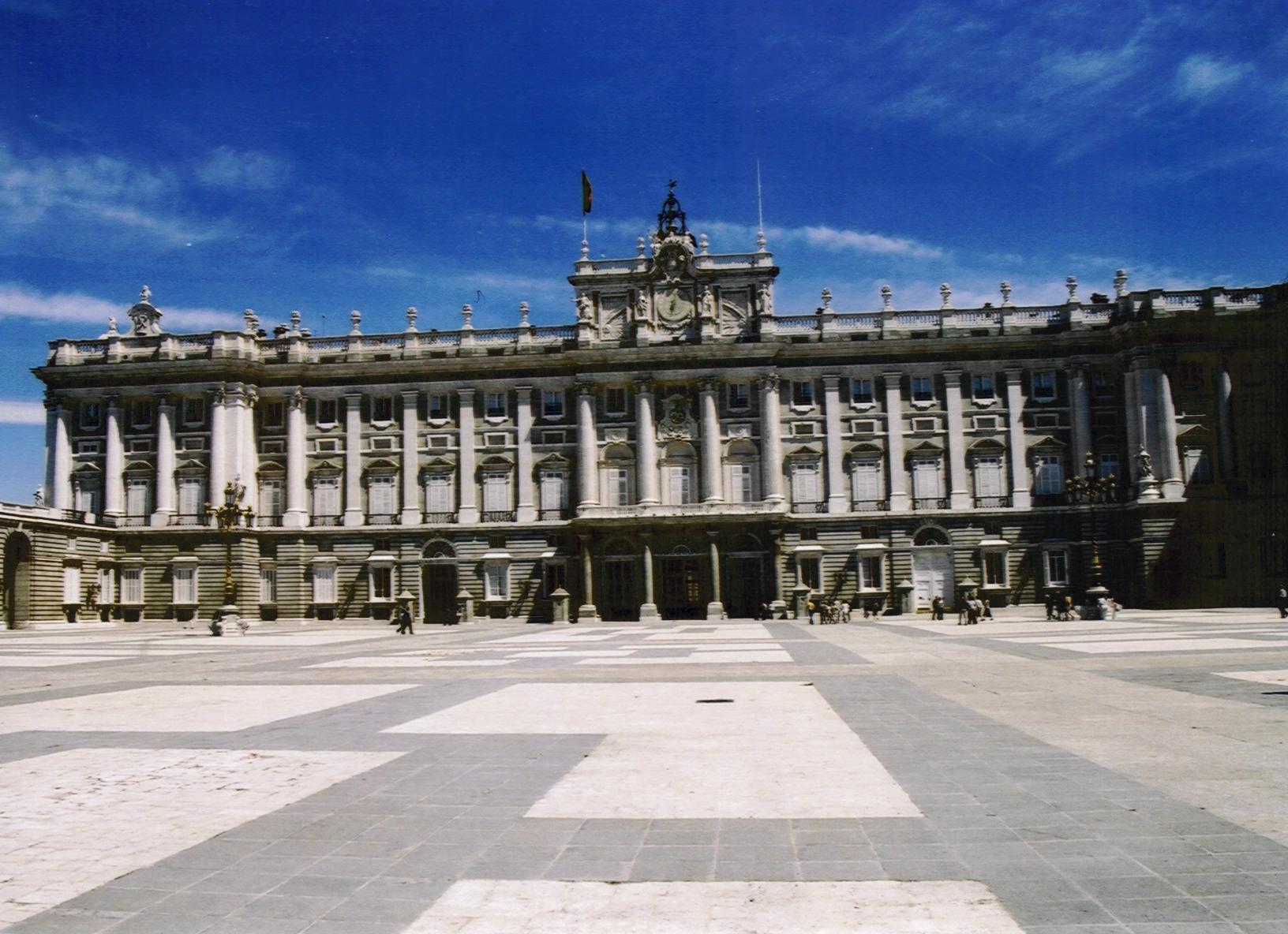LYNN’S SPAIN/MOROCCO
JOURNAL
Day 18, Sunday, May 26
Madrid
Not the best day of the week to be in a big European city because either things are closed or close early. If our schedule had allowed, it would have been nice to go to mass. This hotel included breakfast—more than rolls and coffee--we also had juice and cereal. We wanted to get an early start at the Prado, which opens at 9 on Sundays. We had allowed a couple of hours for the Prado, which is ludicrous—quite a shame for a great museum—but we wanted to leave time for the Royal Palace in the afternoon. Unfortunately, we got behind a Japanese tour group in line, and the pass through for security took a long time. Once inside, we found the map and gamely tackled all the many rooms and floors (three). We saw a quantity of paintings by Rubens, Velasquez, Goya, el Greco, Rembrandt, Bosch, various Flemish painters. The Bosch included the Garden of Delights, about which I had written a paper in school. It was like eating at a great feast. We did manage to hit the Top 10 according to the guide except for two Goyas (Duchess of Alba, clothed and unclothed, on loan to Washington). It got more and more crowded as the morning progressed.
We passed a wonderful fountain right outside the Prado—in the style of Roman fountains. We walked through the Plaza Mayor again on the way to the Palace—we had gone there before going to the Prado. On the earlier visit, we had seen Army trucks and soldiers getting ready for something. On the second visit, they were obviously starting to cook something—big pots.
The Madrid cathedral, Catedral la Almudena, is right next to the Royal Palace or Palacio Real. Over Philip’s misgivings, we took a guided tour of the palace. I’m glad we did because we had an excellent guide, but Philip’s feet hurt more from standing around listening to her descriptions (easier on the feet to keep moving). She made a big effort to both stun us with figures (we will see 25 rooms out of 3,000) and to connect the past with the present (this room was used last week). The palace seems like a poor man’s version of Versailles: different rooms for different parts of the king’s day, beautiful marble floors, impossible to describe frescoes on the ceilings, embroidered walls. There was also a temporary art exhibit of a lesser-known Spanish painter in another part of the palace. We skipped the royal armory and the pharmacy. I bought my last 4 postcards—2 at the Prado and 2 at the Royal Palace, plus a leather purse for Dad at the latter. I later wrote and stamped these 4 postcards—then forgot to mail them from Spain. But they arrived faster at their destinations since I sent them from California.

 Palace Ceiling
Palace Ceiling
The Royal Palace
We decided to have late lunch at the Palace, a wise choice. I had a big salad, and Philip a meat/cheese platter. They also had great rolls. Walking back home through the Plaza Major, we came upon the reason for the army. There appeared to be some kind of benefit for an organization to save children. There was a table selling T-shirts to that effect. There were people walking around with bowls of chick peas and sausages. And there were lines of people waiting to be served from the army’s big pots. There was a big banner proclaiming cocida something. We learned from the dinner menu that night what that was: chick peas cooked with meat and other vegetables (looked kind of like cassoulet). Wish we could have had some, but we had just eaten late lunch and were planning to eat dinner at one of the restaurants Bob Vallone had recommended. So we passed on through to the hotel, where we rested and showered. Dinner was just a few steps away off the Plaza de Santa Ana: la Trucha, not fancy but served pretty good food. We had checked it out the day before and confirmed that it was open on Sundays.
I had fried eggplant and bulls-tail stew (I had tried to get that in Sevilla, but they had run out); Philip had vegetable soup (mostly potatoes and leeks) and Spanish eggs (eggs with potatoes). We walked to Sol after dinner—I finally found the plaque on the sidewalk outside the Casa de Correos, once the post office, now the Madrid regional offices. From it (kilometer zero), all distances in Spain are measured. I was frustrated about not being able to find it the first day. It wasn’t much to look at, but it to me symbolized the might, power and glory of Madrid, much as Paris is for France and Rome once was to all of Europe (all roads lead to Rome).
We spent the evening doing the final pack and going to bed relatively early (11 p.m., early for us on this trip—sometimes we were eating dinner at 11!). We had figured out earlier how to set Philip’s s watch alarm so as not to oversleep in the morning for our very early morning flight.